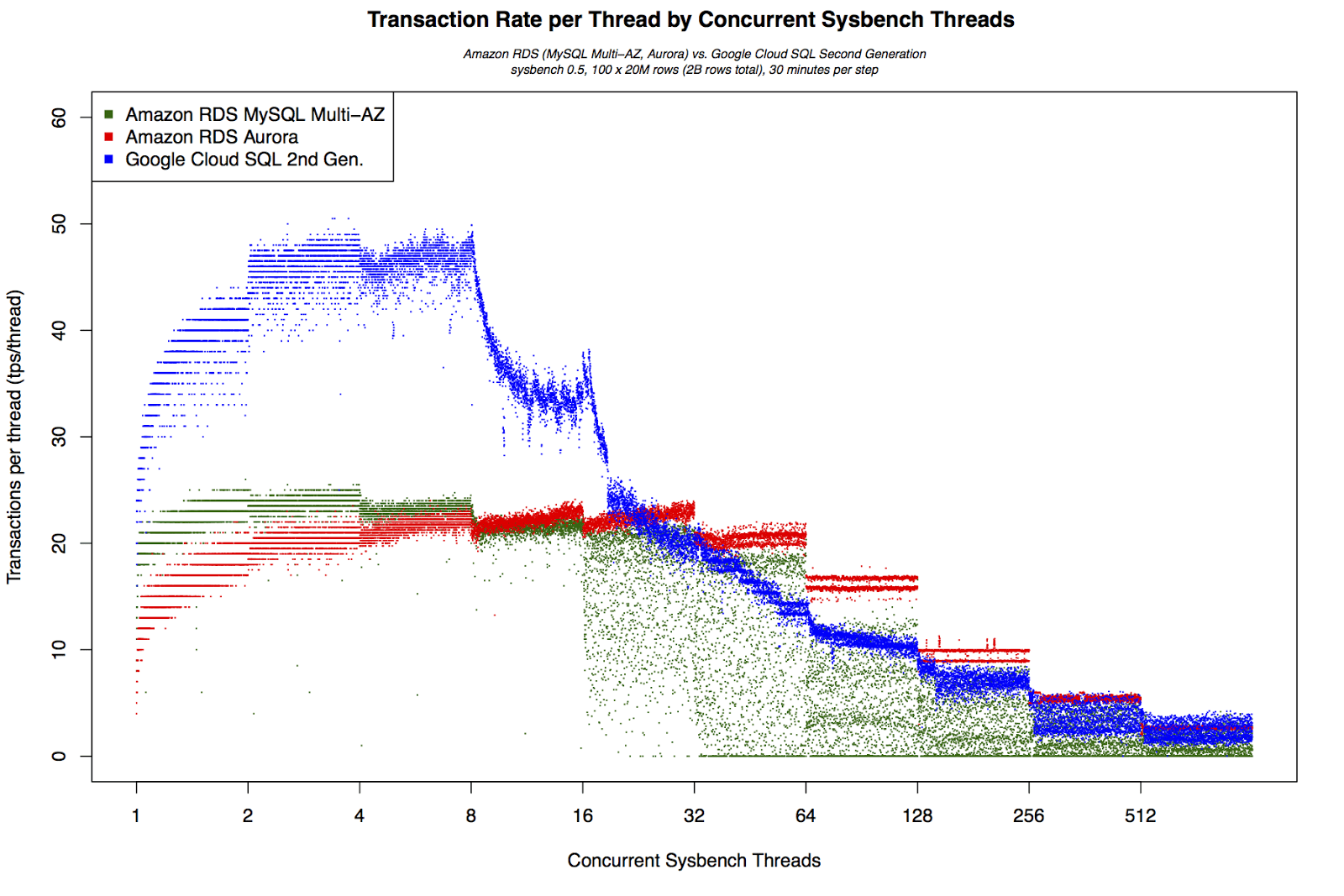As Google Cloud Platform (GCP) continues its quest for dominance as a public cloud, it recently announced a move to make all of its database storage products generally available and covered by corresponding Service Level Agreements (SLAs). It is also releasing new performance and security support for Google Compute Engine (GCE), so whether you’re running simple applications or building a petabyte-scale system, Cloud Platform is ready to reliably serve databases of all types.
Cloud SQL, Cloud Bigtable and Cloud Datastore Updates
Google Cloud SQL Second Generation, Google’s fully managed database service offering user friendly MySQL instances is now generally available after a successful beta. A number of enterprise features like support for MySQL 5.7, point-in-time recovery (PITR), automatic storage re-sizing and one-click set-up of failover replicas were included as well.
Cloud SQL is currently delivering industry-best throughput, up to 2x more transactions per second at 50% of the latency per transaction compared to Amazon Web Services (AWS) Relational Database Service (RDS) using Aurora. The steps to reproduce this benchmark can be found here.
Google Cloud Storage Nearline Storage Latency Improvements
Google Cloud Storage Nearline is a cost-effective way to store database backups, offering object storage at costs less than tape. Previously, retrieving data from Nearline incurred 3-5 seconds of latency per object. However, after recent performance improvements, Nearline now enables access times and throughput equal to Standard class objects. The faster access times and throughput allow users to leverage big data tools like Google BigQuery to run federated queries across stored data and allows Nearline to meet some enterprise production needs, at less than half the cost of Standard Google Cloud Storage.
Volumes for IOPS for Persistent Disk Increased
Because database workloads are dependent on great block storage performance, Google is increasing the maximum read and write IOPS for SSD-backed Persistent Disk volumes from 15,000 to 25,000 at no additional cost. This is another example of Google’s transparent commitment to delivering better price-performance over time, requiring no action on the part of their customers.
Conclusion
The improvements Google has made here to Google Cloud Platform emphasize Google’s commitment to innovation and to the enterprise. By allowing organizations to access even more of the “secret sauce” Google has been developing over the last decade, businesses can continue to focus on what’s important to them and stop spending time on building tools and infrastructure to support their initiatives.




